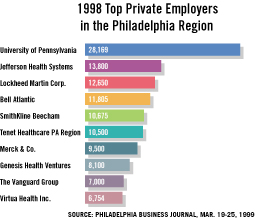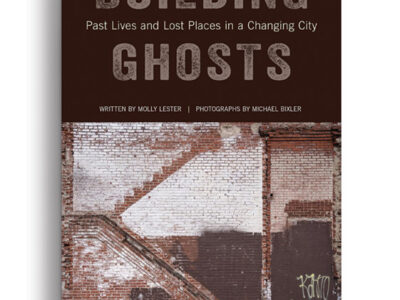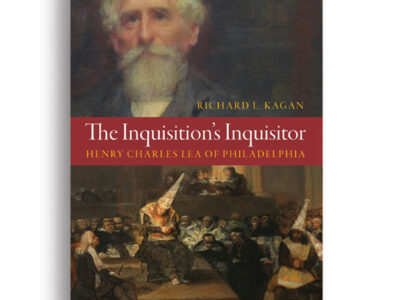It’s no secret that the University—the largest private employer in the Philadelphia region—has a powerful impact on the local economy. This past fall, when the international accounting and consulting firm of PriceWaterhouseCoopers completed the first in-depth study of Penn’s regional economic impact in seven years, it became clear just how powerful that impact really is.


The study, which used information from the 1997 fiscal year, concluded that:
- Penn generates $4.3 billion in direct and indirect combined economic activity in Pennsylvania, including $1.5 billion in Philadelphia.
- Penn supports the equivalent of more than 46,000 full-time jobs in the region.
- Penn’s average annual economic growth rate—nine percent between fiscal 1990 and 1997 —is five times that of Philadelphia and its surrounding counties.
- Penn’s research capabilities have helped launch 30 new startup ventures and more than 200 licensing agreements with private companies.
- Penn completed more than $255 million in new construction projects between fiscal 1995 and 1998, and plans to spend another $817 million on construction through fiscal 2002.
- Penn purchased $42 million worth of goods and services from West Philadelphia vendors in fiscal 1998.
- Penn’s community-partnering and economic-development initiatives have sparked the
revitalization of University City, both in its residential neighborhoods and in its commercial corridors.
In a message to the University community, Penn President Judith Rodin and executive vice president John Fry wrote: “Penn is a crucial player in the area’s economic development, and the University has become a 21st-century destination. Its reputation for academic excellence and its world-class museums and theaters draw tens of thousands of researchers, skilled workers, entrepreneurs and visitors to the region annually.”
As long as Penn is able to “secure appropriate space for future development,” they noted, “it will continue to be a dynamic knowledge resource providing world-class educational, research, healthcare and public services that generate economic vitality throughout the region.”




